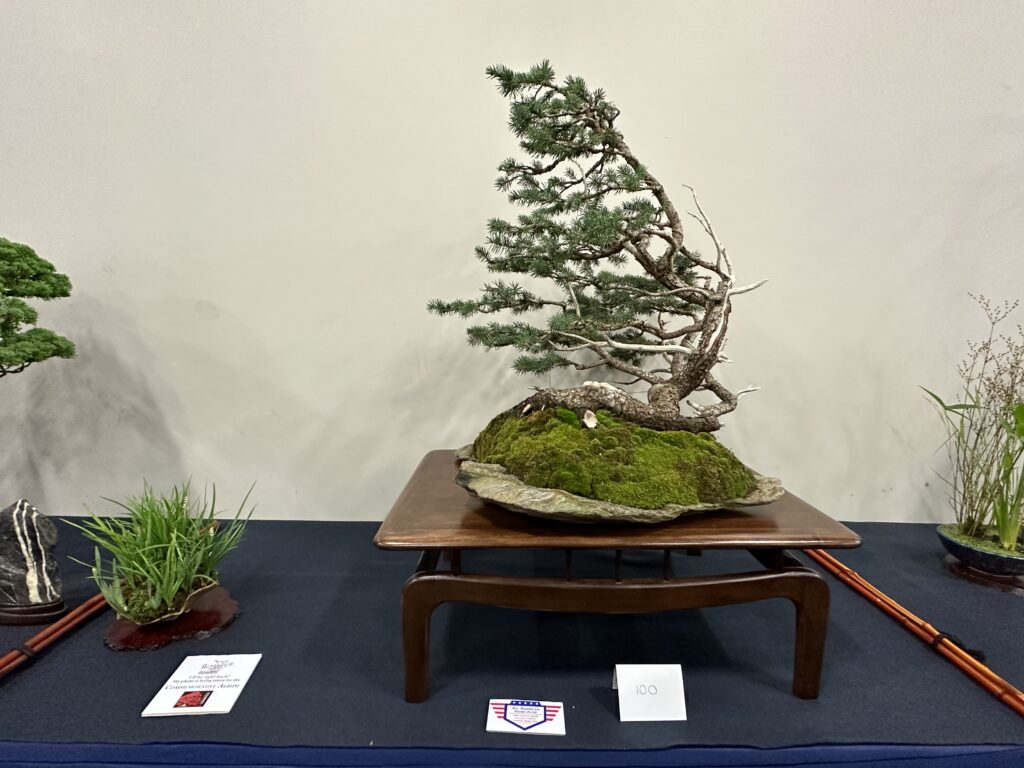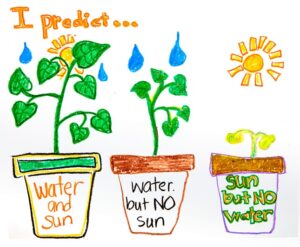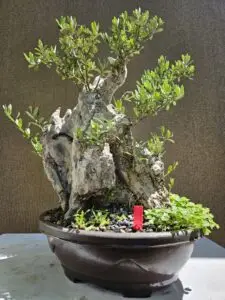
Colorado Blue Spruce
Also known under its scientific name Picea pungens “glauca,” the Colorado Blue Spruce is a popular bonsai tree in the United States. This evergreen is native to cool weather forest regions in the Northern Hemisphere. The Colorado blue spruce has attractive silvery blue/green needles. This cone bearing evergreen (conifer) has thin, scratched looking bark with beautiful blue-hued evergreen needles. This bonsai has a traditional tree shape and a pointed peak making it one of the most popular Christmas trees around. The Blue Spruce bonsai is native to the Rocky Mountains of North America and is highly adaptable to different climates.
Spruce trees, in general, are a little bit tricky to style as bonsai. Their branches tend to be flexible and don’t hold new shapes right away. Colorado blue spruce bonsai falls into this category. Colorado blue spruce bonsai also is hardy (except in hot climates) and requires relatively little specialized attention for a bonsai.
In their natural environment, blue spruce can grow between 30-60 feet tall and 10-20 feet wide. The tree grows slowly during the first few years, but it eventually reaches a rate of about 12-24 inches of growth each year. However, it is possible to slow down this growth and keep Colorado blue spruce the appropriate size for bonsai. It generally takes between 10-15 years for a blue spruce tree to develop into an attractive bonsai specimen.
One of the easiest ways to keep a Colorado blue spruce bonsai small is to select a dwarf blue spruce variety. Some of the most common styles to consider are straight-trunk, curved-trunk, windswept, and multi-trunk. If you start with a blue spruce bonsai that is not already styled, you’ll need patience. It takes time to train bonsai into a distinct style. Unless you are prepared to spend years working on styling your spruce bonsai, you should consider buying a blue spruce bonsai that has already been trained.
The majority of pruning should be done during the fall. You can do light pinching in the spring and summer if needed, but be very selective if you pinch back new shoots during this time. Don’t remove all the new growth. Wiring should happen in winter or autumn when the Colorado blue spruce is growing more slowly. Remove the wire during the growing season.
Spruce bonsai love sunlight, especially during the spring and the summer. Place your bonsai in a location with direct light during the morning and evening. In most areas, you’ll want to make sure your Colorado blue spruce bonsai has shade during the afternoon. If you live in a cooler climate, shade during the afternoon isn’t as necessary. Blue spruce bonsai should remain outside the majority of the year. Blue spruce can handle some high temperatures during the summer. In winter to protect your Colorado blue spruce bonsai’s roots, either bury the container or place mulch over the pot before freezing weather arrives. If needed, you can shelter your bonsai in an unheated place, like a garage or shed, during freezing weather. While blue spruce bonsai should not be exposed to freezing temperatures without protection, it still needs a period of cool/cold weather during the winter months. The tree should be protected from strong wind and sun (but not snow or rain) throughout the winter.
Spruce bonsai benefits from humidity all year long. If you keep your bonsai in a sheltered area during the winter, be sure that there is some moisture in the air. Try placing shallow trays filled with water nearby to add extra moisture if you keep your bonsai in an unheated garage or storage space without adequate humidity.
Unlike many bonsai, blue spruce does best when watered a little less frequently. While you don’t need to allow the soil to dry out completely between waterings, wait until the top three inches of soil are dry before watering again. Blue spruce bonsai trees typically need to be repotted every four or five years. Summer is the best time to repot Colorado blue spruce bonsai trees.
Blue spruce bonsai trees may attract aphids, mites, spruce needle miners, spruce budworms, or a variety of caterpillars. Pesticides can be used to get rid of these insects. Blue spruce bonsai may also have fungal diseases, including rust or needle cast.
Colorado blue spruce is easy to start from seed. You’ll get a nice rate of germination even if you don’t prepare the seeds in advance. Allow the seeds to soak in water for 24 hours. Drain the water, and then place the seeds in a freezer-safe bag. Place in the fridge for around 4 weeks. Place the seeds into containers filled with high-quality potting soil. Cover with a very fine layer of soil. Water as needed to keep the soil moist. Place the containers somewhere that will allow the seeds to remain at room temperature. Within around 2 weeks, you should see germination beginning. To care for the seeds, keep them in full sun and water frequently. Colorado blue spruce trees are a bit more finicky about being propagated from cuttings, but it’s still possible to do. But if you have access to cuttings, go ahead and give it a try. After placing cutting with hormone into soil, after about 2 months, you can begin checking for roots. Sometimes it takes up to 4 months for roots to develop. After 4 months, any blue spruce cuttings that haven’t developed roots are unlikely to do so in the future.
When it comes to styling Blue Spruce bonsai, enthusiasts often find themselves torn between traditional and modern approaches. Traditionally, in the case of Blue Spruce bonsai, this approach focuses on showcasing the natural beauty and graceful growth patterns of the tree. Traditionalists believe that a bonsai should reflect the essence of a full-sized tree, with an emphasis on balance, harmony, and asymmetry. The aim is to maintain the tree’s inherent characteristics while accentuating its unique features. This may involve careful pruning to enhance the tree’s overall silhouette, wiring to create elegant branch formations, and selective thinning to allow light to penetrate the inner foliage.
The modern approach to bonsai styling embraces innovative techniques and artistic expression. Modernists believe that bonsai should be seen as living sculptures, allowing for more creative freedom and experimentation. With a focus on pushing the boundaries of traditional aesthetics, this approach often includes unconventional styling methods and non-traditional design elements. When applying the modern approach to styling Blue Spruce bonsai, the aim is to create visually striking compositions that challenge traditional norms. This may involve extreme pruning to create unique shapes, grafting to introduce different foliage colors or textures, and using unconventional containers to enhance the overall artistic impact. Regardless of whether you lean towards the traditional or modern approach, it is essential to remember that styling Blue Spruce bonsai requires patience, skill, and a deep appreciation for the natural beauty of these trees.




